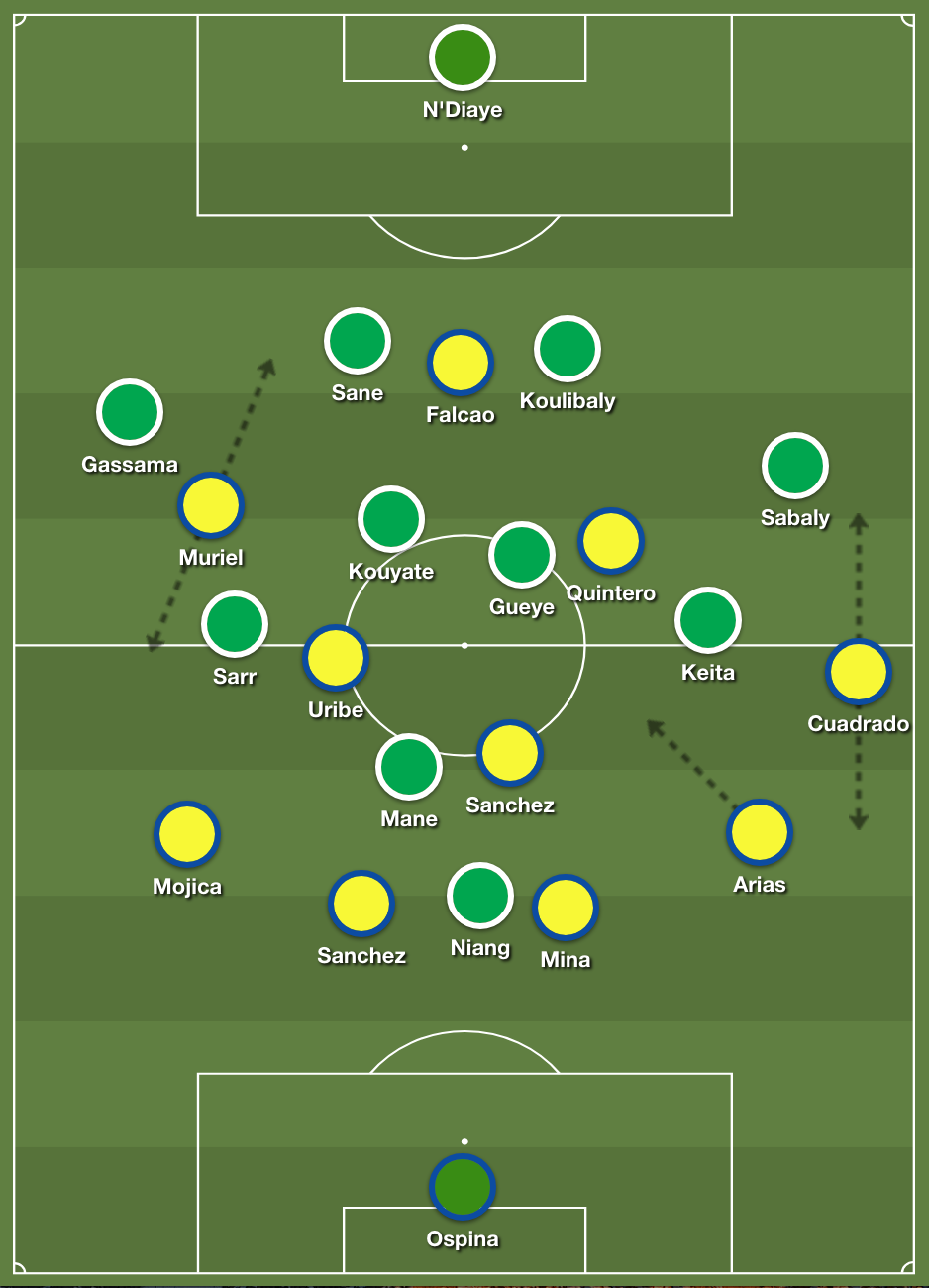World Cup 2018: Analysing the tactical flaws England will look to exploit against Colombia in the Round of 16
Tactical analysis: David Ospina's weakness at crosses is just one thing England should target, writes Michael Cox

Your support helps us to tell the story
From reproductive rights to climate change to Big Tech, The Independent is on the ground when the story is developing. Whether it's investigating the financials of Elon Musk's pro-Trump PAC or producing our latest documentary, 'The A Word', which shines a light on the American women fighting for reproductive rights, we know how important it is to parse out the facts from the messaging.
At such a critical moment in US history, we need reporters on the ground. Your donation allows us to keep sending journalists to speak to both sides of the story.
The Independent is trusted by Americans across the entire political spectrum. And unlike many other quality news outlets, we choose not to lock Americans out of our reporting and analysis with paywalls. We believe quality journalism should be available to everyone, paid for by those who can afford it.
Your support makes all the difference.If it remains difficult to judge England’s level of ability, after two victories against below-par opposition and a defeat with a second-string XI , something similar can be said of Colombia for very different reasons. Jose Pekerman’s side have blown hot and cold, with a fine 3-0 win over Poland sandwiched by a 2-1 defeat to Japan and a nervy 1-0 win over Senegal yesterday.
The Japan loss was influenced heavily by the fact Colombia were down to ten men for almost the entire contest, and the Senegal performance was compromised by star man James Rodriguez clearly being unfit, lasting just half an hour. It seems unlikely he’ll be fit to start against England , and certainly won’t be 100% fit.
Without him, Colombia laboured to victory over a Senegal side which appeared more threatening in open play, particularly on the counter. The crucial goal was headed by Barcelona’s Yerry Mina midway through the second half, his second of the competition, meaning Colombia are halfway to rivalling England in terms of set-piece goals. Overall, however, Gareth Southgate and his coaches will find plenty of weaknesses when assessing Colombia’s performances so far.

England will be familiar with David Ospina, signed by Arsenal after his fine World Cup performances four years ago, but his displays have declined significantly over the past couple of years, and he was fortunate a couple of major errors in qualification didn’t cost Colombia their World Cup place. Ospina continues to look particularly vulnerable when coming for high balls, and with England’s set-piece expertise and Kieran Trippier’s fine crossing, this could be a crucial factor.
At the back Colombia have a couple of excellent young individuals in Mina and Davinson Sanchez, but they’re yet to function effectively as a duo. Sanchez endured a disastrous opening game against Japan, although was more impressive against Senegal where his recovery speed rescued Colombia. One last-ditch tackle on Sadio Mane was superbly-timed, albeit after the referee had initially awarded a penalty and subsequently overturned his decision after consulting VAR. The speed of Colombia’s centre-backs could be key, against an England side eternally looking to get runners in behind, but the fact Sanchez was force into that type of desperate challenge indicates there are weaknesses.

The most notable feature of Colombia’s performance against Senegal was the curious nature of their right flank. Santiago Arias, the right-back, continually pushed into central midfield positions throughout the first half, which meant right-winger Juan Cuadrado dropped extremely deep to receive possession in space away from his opponents. Cuadrado sometimes attempted too much in deep positions, however, and his concession of possession resulted in the aforementioned overturned penalty decision when the Colombia defence were forced to push across and cover. On the other flank, Johan Mojica tends to dive into tackles, and was booked here.
In midfield, Carlos Sanchez anchors the midfield far more effectively than his Aston Villa spell would suggest, sometimes dropping into defence to turn Colombia into a 3-4-3, which might be particularly useful against an England side also using a three-man defence. Mateus Uribe sat alongside and kept his passing simple.

Going forward, Colombia are extremely dangerous, but their approach depends upon the fitness of Rodriguez. If fit, he’ll play from the left, drifting inside to combine with Juan Quintero between the lines. If not, Colombia’s approach will be more structured with Cuadrado hugging the right touchline, and Luis Muriel, Rodriguez’s replacement here, on the left. Muriel pushed into a second striker position at half-time against Senegal, prompting an improvement in Colombia’s play, but Pekerman will be more cautious against England.
Quintero is the obvious dangerman. He’s capable of running matches from his number 10 position, even if he was nullified by Senegal’s solid central midfield duo of Idrissa Gueye and Cheikhou Kouyate.
Against England, who use only Jordan Henderson in a deep position, he will find more space when drifting into wider positions.
Upfront, Radamel Falcao was quiet against Senegal but has shown his improved all-round qualities at this tournament, leading the line superbly when Colombia were down to ten men against Japan, coming short to link play and repeatedly winning free-kicks, including the one Quintero snuck under the wall for Colombia’s equaliser. Falcao’s movement is good enough to occupy all three England centre-backs simultaneously, which should create space for others.
But realistically Colombia have shone for only one of the six halves they’ve played so far, after half-time in the Poland victory when they matched good through-balls with well-timed runs. Pekerman’s side represent a much trickier test than Japan, but there are defensive gaps England’s midfield runners should be able to exploit.
Join our commenting forum
Join thought-provoking conversations, follow other Independent readers and see their replies
Comments